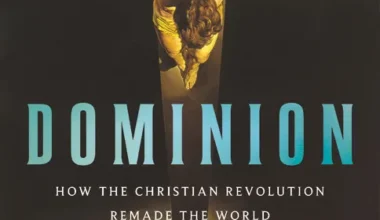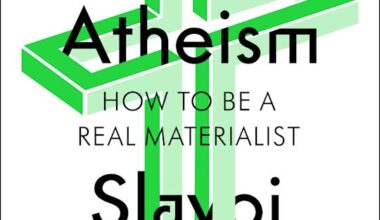Update, 3/1/23: for the latest case on Pastafarianism, see Religious Privilege 2 : 0 Pastafarians, by Niko Alm.

What is it called when you really, really, really believe in secularism?
Can you hold these views and morals so dearly that they become sacred to you? Can you believe that humour, irony, and play are the most appropriate, ‘God-given’ tools to teach your views? Can you believe in coincidental design, which is the most intelligent design, if you also believe in science and the importance of play, experiments, and a trial-and-error approach to learning and becoming?
And if you firmly believe in such a system, might you also devoutly believe in the use of metaphorical thinking to guide the manner in which you practise this belief and give concrete meaning to your thoughts? What if you believed this moral system of secularism so firmly that you would make serious sacrifices for it, engage in legal warfare, and consider it to have all the features of religion, even though it had all the features of secularism too? What if one branch of this hybrid belief system was called ‘The Church of the Flying Spaghetti Monster’? Can you have a serious secular religion, and would it deserve the same protection as every other religion, by calling it a religion? In other words: can we call a hybrid religion, ‘religion’?
Pastafarianism belongs to ‘New, Unknown, Weird and/or Small (‘NUWS’) religions, a term proposed by the Dutch scholar Derk Venema. Its founder is Bobby Henderson, a science student from Portland, Oregon. Pastafarians revere an all-powerful, invisible, flying monster made of spaghetti and meatballs. Their holy book is the Gospel of the Flying Spaghetti Monster.
Is this a religion? According to the European Court of Human Rights in Strasbourg, the answer to this question is ‘no’. That appears from their recent verdict in De Wilde vs. The Netherlands (2021).
According to the European Court, Pastafarianism is a secular creed – not serious, not religious. But what if someone’s secular worldview is so firmly held that he believes he needs to adopt a fitting religion to practise, preach and teach that secular worldview in the best possible way? Should he not have the right to practise his worldview freely if – with this religion of practising secularity – he does no harm to others? Does everybody have the same right to have a recognised faith in order to practise what they preach, or is that a privilege reserved for people who believe in something in the most literal or classical sense?
What about ‘cultural Christians’, who only use their religion as a cultural tradition to bond with family and friends on holidays, weddings, and funerals? Or what about Muslims, who often state they do not literally believe everything their holy texts are saying? Should we deny them their rights as well, or should we be glad when people do not take fundamental religious texts literally and read them in a more metaphorical way?
These are a lot of questions, but there is also is a lot to think about.
Back to the European Court of Human Rights, but now to a different case. In 1993, in the Kokkinakis case, the Court made an important ruling. The case dealt with whether a Jehovah’s Witness would not be unduly frustrated in his right to practise his religion by a Greek ban on proselytising. The Court ruled that this would be the case. But more interesting for the topic of this essay is something that the Court said about the reach of Article 9 in the European Convention of Human Rights – the article which protects the freedom of thought, conscience, and religion. Here is what the Court said in Kokkinakis:
‘As enshrined in Article 9 (art. 9), freedom of thought, conscience and religion is one of the foundations of a “democratic society” within the meaning of the Convention. It is, in its religious dimension, one of the most vital elements that go to make up the identity of believers and their conception of life, but it is also a precious asset for atheists, agnostics, sceptics, and the unconcerned. The pluralism indissociable from a democratic society, which has been dearly won over the centuries, depends on it.’
In turn, Article 9 of the European Convention of Human Rights states as follows:
‘1. Everyone has the right to freedom of thought, conscience and religion; this right includes freedom to change his religion or belief, and freedom, either alone or in community with others and in public or private, to manifest his religion or belief in teaching, practice, worship and observance.
2. Freedom to manifest one’s religion or beliefs shall be subject only to such limitations as are prescribed by law and are necessary in a democratic society in the interests of public safety, for the protection of public order, health or morals, or for the protection of the rights and freedoms of others.’
This combination of jurisprudence and law terminated any speculation about the extent of religious freedom under the ECHR. The statement in Art. 9 that one can change one’s religion or belief – the so-called apostasy clause (Cliteur 2021), is, as part of the freedom of religion, ‘also a precious asset for atheists, agnostics, sceptics and the unconcerned.’ Since Kokkinakis, we know that the apostasy clause is applicable to those who want to change from one religion to another religion, but also to those who want to change from a religion to non-religion, that is, to atheism, agnosticism, scepticism or simply ‘indifference’. The freedom of religion, or the freedom of thought, conscience, and religion, also protects the rejection of all faiths and thus the right to freely practise that rejection, or lack of belief, in teaching, practice, worship, and observance.
The Kokkinakis case was an enormously important step in what might be called ‘the emancipation of fundamental unbelief’. For European citizens whose governments had joined the ECHR, it was clear from 1993 onwards that their philosophical position had found explicit protection under Article 9. In other words, their view was protected not only as an ‘opinion’ under the right to freedom of expression (art. 10 ECHR), but also under the apparently more dignified right of ‘freedom of conscience, thought, and religion’.
From 1993 onwards, the right to be an atheist in practice and preaching was clearly affirmed. Article 9 protects the interests and rights of believers who want to stay within the traditional religious mould, but also the interests and rights of those who want to break free from it.
The consequences are significant and relevant to a broad spectrum of social institutions. Take the case of education. ‘Atheists, agnostics, sceptics, and the unconcerned’ also have a conscience. They have their ‘thought’. And their conscience and their thought have the same protection under the Convention as the classical religious conscience, or classical religious thought.
What does this mean? If atheists have the same rights, they too should be able to manifest their belief in teaching, practice, worship, and observance, in any way they think is necessary. If an atheist or agnostic believes he needs to adopt a religion to be able to practise, teach and manifest his beliefs, he should not be restrained from exercising his rights. After all, ‘the freedom to manifest one’s religion or beliefs can only be subject only to such limitations as are prescribed by law and are necessary in a democratic society in the interests of public safety, for the protection of public order, health or morals, or for the protection of the rights and freedoms of others.’ Or can it?
As we have argued, the right to freely change religion counts for believers who might want to change to a different religion (for example, from Christianity to Islam), and for those who want to make changes within the central elements of their belief system, for instance by questioning the trinity within Catholicism. The consequence of this freedom is often ignored. One of the consequences, in our view, is that Article 9, especially in combination with the apostasy clause and its interpretation in Kokkinakis, can help us to develop more liberal interpretations of religious positions. In a time of increasing fundamentalism, this is no mean feat. And not only that: it can help us to ‘liberalise’ the notion of religion itself.
Unfortunately, in De Wilde vs the Netherlands, the ECtHR failed to consider the liberating effect of the apostasy clause and Kokkinakis, as far as the idea of ‘religion’ itself is concerned. Let us explain what we mean.
The Court has repeatedly emphasised that ‘religion’ must meet specific requirements to find protection under Article 9. And it has also indicated what these requirements are. However, no exhaustive definition of religion has been given by the Court. The conditions set by the Court for something to count as a ‘religion’ are therefore necessary conditions, but not sufficient conditions. What are these conditions? Let the Court speak for itself. In Eweida v. UK (2013, para 81) it states:
‘The right to freedom of thought, conscience and religion denotes views that attain a certain level of cogency, seriousness, cohesion and importance.’
Thus Article 9 does not protect just any arbitrary position that the complainants see as religious, but only views characterised by:
1. Cogency
2. Seriousness
3. Cohesion, and
4. Importance.
We might call these the ‘coherence requirements’. ‘Seriousness’ proved to be a fatal stumbling block for recognising the Church of the Flying Spaghetti Monster as a ‘religion’. The CFSM uses irony and humour – and according to the legal institutions in the Low Countries and the European Court in Strasbourg, this was incompatible with ‘seriousness’. We deplore this. We also think it is a missed chance to have the combination of the apostasy clause and the Kokkinakis case further developed. The Court could have said: why should religion always be gloomy? Why exclude humour and joy from the concept of religion? Why is parody incompatible with religion? But perhaps this is something for further consideration.
What we consider a promising perspective for the future is the development of the concept of ‘secular religion’, and ultimately its legal recognition. Religions go through changes. But the idea of religion is also undergoing change. In more or less closed cultures (cultures not open to pluralism, diversity, open-mindedness), people use a concept of religion that is wholly grafted onto their own religion, the religion of their own country, or their own culture. For the ancient Greeks, for example, it must not have been easy to imagine a concept of religion that was not polytheistic. For the Jews, on the other hand, it was difficult to conceive of a religion that was not monotheistic.
Today, a judge who must interpret the concept of religion will not hesitate to include both the monotheistic and polytheistic conceptions of religion. Even atheistic religions, such as certain forms of Buddhism, find recognition in law. Is it not evident that the resistance that now manifests itself against ‘humorous religion’ will be broken one day? We think so.
The time will come when a religion that values parody, humour, light-heartedness, and merriment will also find recognition as a genuine religious option. Perhaps this could be called a ‘secular religion’. A religion that takes ‘seriously’ values which are traditionally associated with secularism and modernity. That will also be the moment when all discrimination against alternative religions, such as the Church of the Flying Spaghetti Monster, is finally abandoned.
Enjoy this article? Subscribe to our free fortnightly newsletter for the latest updates on freethought.







1 comment
Your email address will not be published. Comments are subject to our Community Guidelines. Required fields are marked *
Donate